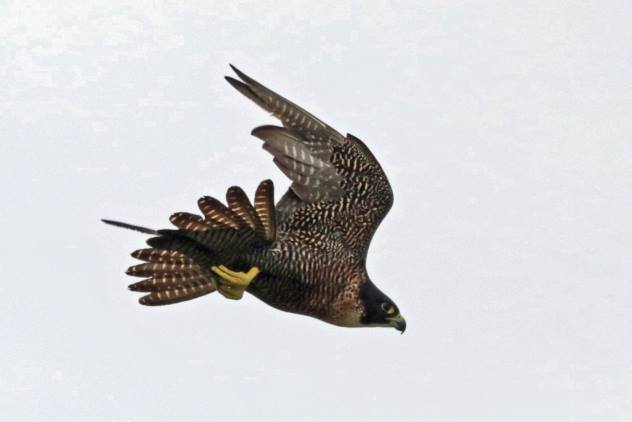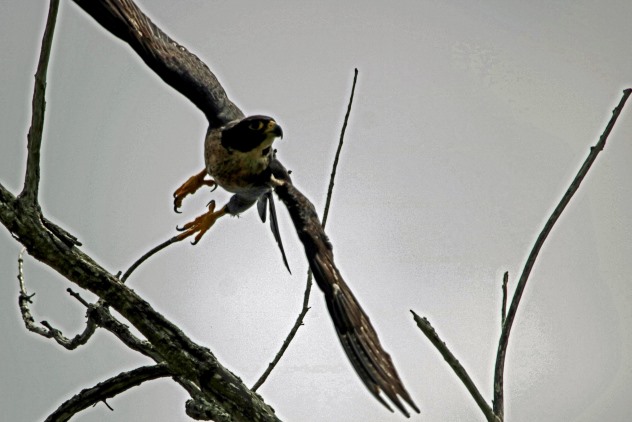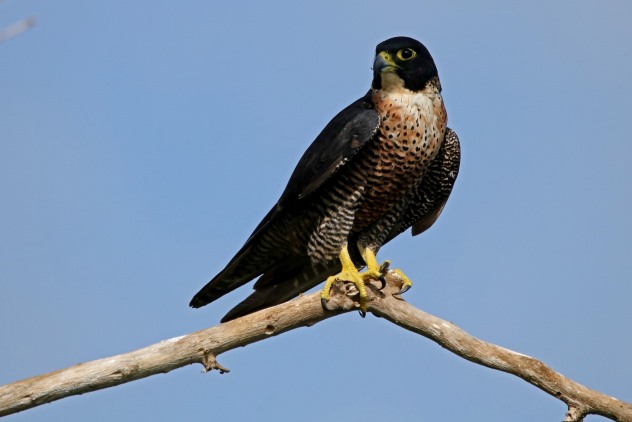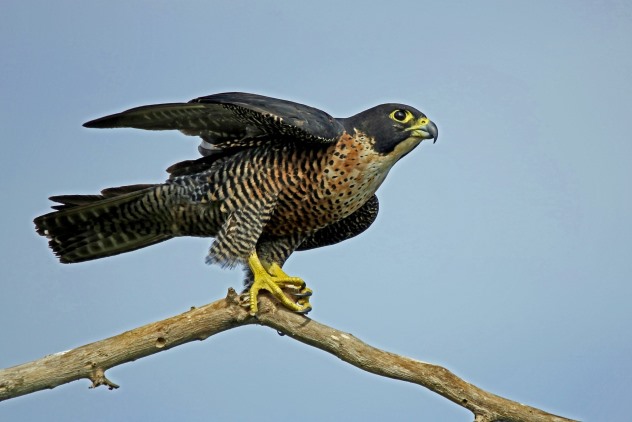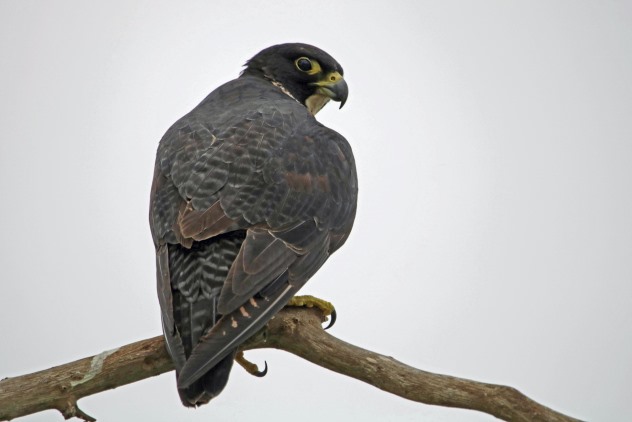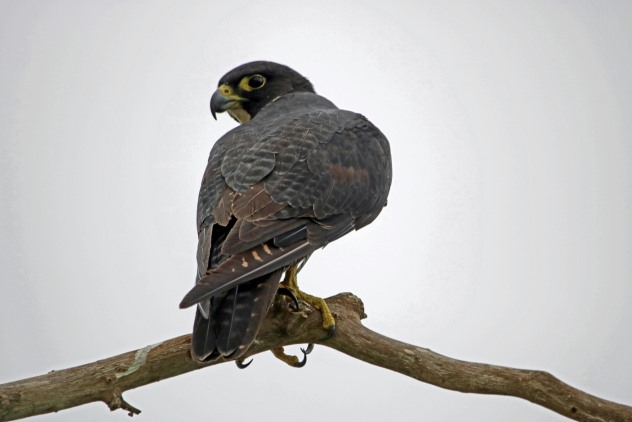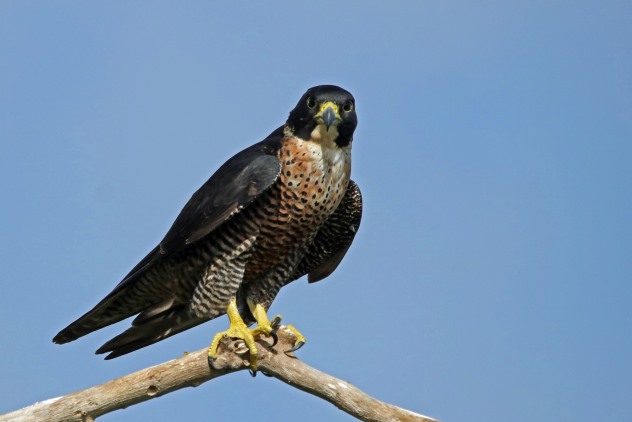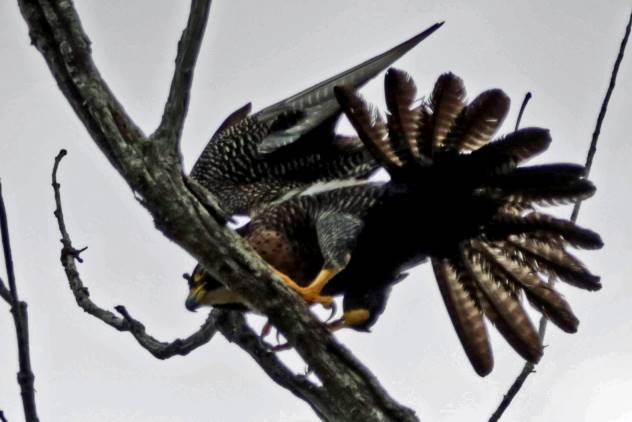Regarded as one of the noblest and most spectacular of all birds of prey, the peregrine falcon is reputed to be the world’s fastest bird as well as the fastest member of the animal kingdom, capable of reaching 200 miles per hour with its continuous powerful wingbeats. Its speed makes it a formidable hunter that preys on other birds in mid-flight.
These powerful raptors hunt by flying high and drop into a steep, swift stoop after sighting their prey. Large prey may be knocked out of the air, fed upon on the ground where it falls. They may pursue prey in level flight, after having spotted it from a perch or while flying. Although its diet consists almost exclusively of medium-sized birds, the peregrine will occasionally hunt small mammals, small reptiles, or even insects.
Peregrine falcons are the world’s most widespread birds of prey and live on all six continents except Antarctica. The only major ice-free landmass from which it is entirely absent is New Zealand.
They prefer mudflats and wide-open spaces, and thrive near coasts where shorebirds are common, but they can be found everywhere from tundra to deserts. Peregrines are even known to live on bridges and skyscrapers in major cities. Becoming increasingly common in cities, they can nest on tall buildings and human-made structures and feed on pigeons.
Peregrine populations were in steep decline during the mid-20th century because of the effects of DDT and other chemical pesticides,so much so that these beautiful falcons became an endangered species. The peregrine population has rebounded strongly since the use of DDT and other chemical pesticides was curtailed. Captive breeding programs have also helped to boost the bird’s numbers in the U.S. and Canada.
As is typical for bird-eating raptors, peregrine falcons are sexually dimorphic, with females being considerably larger than males. According to one study, it has the fastest visual processing speed of any animal tested so far.
Reaching sexual maturity at one year, it mates for life. Territorial and courtship displays include high circling flight by male, spectacular dives and chases by both sexes. Incubation is mostly by female, 32-35 days. Male brings food for female during incubation. Female stays with young at first, while male brings food for her and for young; later, female hunts also. Age of young at first flight is 39-49 days.
Breeding peregrines defend the immediate area of the nest from intruders, but hunt over a much larger area. Nest site is usually on cliff ledge, sometinmes in hollow of broken-off tree snag or in old stick nest of other large bird in tree.
I have personally encountered peregrine falcons both at Piasau Nature Reserve and Kuala Baram Wetlands. The peregrine falcon at Kuala Baram Wetlands tend to be easier to photograph as it often perches on a short tree near the roadside whereas the falcon at Piasau Nature Reserve is most often seen perched very high up on a tall dead tree.
 CY@CY Says Welcome to my dreamscape. Where a Lim is also a Ling.
CY@CY Says Welcome to my dreamscape. Where a Lim is also a Ling.
